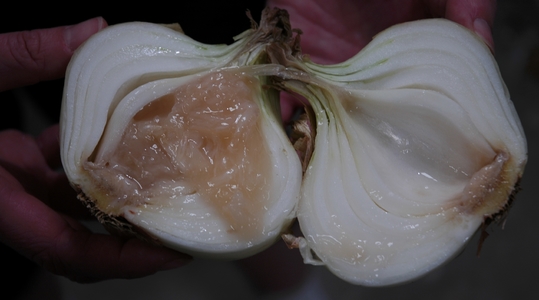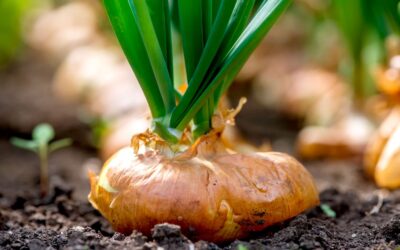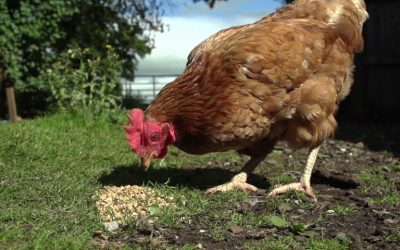How to reduce onion storage rots

A balanced crop nutrition programme can help to reduce onion storage rots by promoting healthier plants. Onions need a period of curing or drying in order to seal the neck, prevent invasion of diseases and rot and to create a bright, crack-free skin. Calcium, magnesium, boron and nitrogen all have an effect on onion storage rots.
Optimum nutrient management during establishment and vegetative growth are needed to ensure nutrients don’t limit bulb quality. Onions are also very prone to foliar diseases and bulb rots, such as slimy or ‘sour’ outer scales, a bacterial disease that significantly reduces onion bulb quality. Fungal diseases such as neck rot, mildew, rust and leaf rot, are frequent too.
Too much nitrogen softens the bulb and increases storage rot diseases. Excess N can also thicken the neck, resulting in greater disease entry.
Excessive nitrogen can result in storage rots, causing yield losses during storage. It can also weaken plant tissues, increasing susceptibility to cold damage.
Calcium helps to improve tolerance to diseases. In association with magnesium, onion crops with high levels of calcium in the bulbs show less storage rots.
Calcium is particularly important for bulb density, integrity and long-term storage with minimal disease problems. Calcium has a major role to play in promoting long-term storage quality with minimal diseases problems. Trials confirm that onion crops with high levels of calcium in the bulbs have reduced levels of black rot due to Aspergillus niger and also less neck rots such as Botrytis allii.
Calcium nitrate has been proven to be the most effective formulation in ensuring minimal onion rot in storage. It is important that Ca and K are in balance.
Boron helps to improve calcium uptake and bulb quality. Research shows that a boron supply can reduce onion rotting during storage. This effect is associated with the micronutrient’s role in improving calcium accumulation in the bulb.

